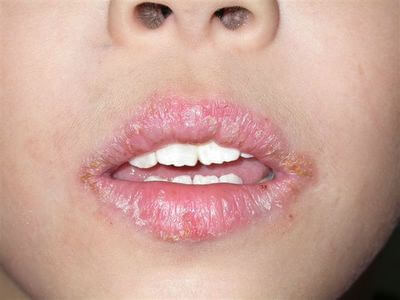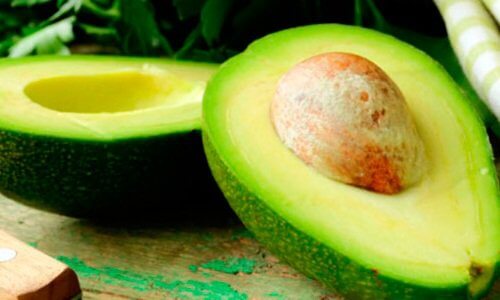Possible Unusual Signs of Vitamin Deficiency

Your body is constantly giving you signs when something is wrong, just like your car does when it’s going wrong. You need to listen to those signs in order to get the necessary repairs done before it’s too late. In the following article we’ll tell you about some of the possible signs of vitamin deficiency. In addition to that, we’ll give you a breakdown of the signs that are specific to each particular vitamin.
Nowadays, in your normal daily diet it might be hard to get all the vitamins your body needs. Not eating enough because you’re on a diet is one reason your vitamin levels might be far below normal.
What are the signs of vitamin deficiency?
According to doctors, an insufficiency of certain daily vitamins doesn’t cause illnesses by itself. However, it can “pave the way” for them to appear. By that we mean that your body will struggle to function normally.
Vitamins act as catalysts for all the reactions that occur in the body. When their stores are depleted, your body will let you know in ways that are sometimes very strange. However strange they may seem, it’s important to pay attention to them.
The five most unusual signs of vitamin deficiency are:

Cracks in the corners of the mouth
If you’re seeing this cracks then it’s probably not because you’re aging more quickly. It’s more likely to be a deficiency of B vitamins – especially riboflavin (B2), niacin (B3), and B12, in addition to a lack of iron and zinc. This is common in vegetarians who don’t follow a balanced diet.
The solution for omnivores is to eat more salmon, eggs, tuna, clams, and oysters (or seafood in general). For strict vegetarians who don’t eat fish, try lentils, peanuts, dried tomatoes, sesame seeds, and spinach. It’s also a good idea to take vitamin C to promote the body’s absorption of iron. Combine the foods listed above with broccoli, cabbage, cauliflower, and red bell peppers.
Red splotches on the skin and excessive hair loss
This can be caused by a deficiency in zinc. Hair loss is a clear sign that this nutrient is lacking. But it can also cause slower healing of wounds, constant dry skin, frequent rashes, red splotchy skin, and severe bruising. You might also see these symptoms if you’re lacking vitamin B7 (biotin) and the fat-soluble vitamins, namely A, D, E, and K.
If you eat raw eggs you’re probably going to have problems with your biotin levels, because it inhibits a particular protein. The solution is to consume more brewer’s yeast, nuts, pumpkin seeds, whole grains, unpasteurized milk, salmon, avocado, cauliflower, mushrooms, raspberries, and bananas.
 Red and white acne-like bumps on the cheeks, arms, and thighs
Red and white acne-like bumps on the cheeks, arms, and thighs
These possible signs of vitamin deficiency occur when you lack the essential fatty acids and vitamins A and D. Unlike acne, these blemishes are harder and lack consistency, and are quite painful if you try to remove them.
The solution to this is to stop eating saturated or trans fats and increase your intake of healthy fats. Add more salmon, flaxseeds, chia, and nuts like almonds and walnuts to your diet. If you’d like to get more vitamin A, try eating carrots, sweet potatoes, and red bell peppers. This gives you beta-carotene.
Tingling and numbness in the hands and feet
What you’re missing in this case is vitamin B, or more precisely B6, B9 (folic acid), and B12. These vitamins directly impact the peripheral nerves and those of the skin. Your symptoms might be accompanied by depression, anxiety, fatigue, anemia, and hormonal imbalances. A solution is to eat asparagus, spinach, beans, eggs, oysters, mussels, octopus, and clams.
Cramping, stabbing pain in the feet, calves, arches, and backs of the legs
These potential signs of vitamin deficiency may be due to a lack of potassium, calcium, and magnesium. It might only be one, two, or all three. If you’ve started a very intense training regimen it could be that you’re losing more minerals and water soluble vitamins (group B) through excessive sweating.
Don’t stop what you’re doing though. Instead, try adding these foods to your daily intake: bananas, hazelnuts, almonds, pumpkin, cherries, apples, broccoli, grapefruit, kale, dandelion, and spinach.
The consequences of each kind of vitamin deficiency
In addition to the five signs of vitamin deficiency that we listed above, there are other problems that occur when one’s diet is unbalanced.
Vitamin A
A lack of vitamin A causes fatigue, poor night vision, bad skin and tooth condition, bleeding gums, and vulnerability to disease.
Vitamin B
- If you’re missing vitamin B1 the symptoms can be insomnia, fatigue, weakness, weak muscular strength, depression, irritability, weight loss, gastrointestinal problems, and cardiovascular issues
- If your levels of vitamin B2 are low, you’ll have red eyes and a sore mouth and tongue, along with oily hair, dermatitis, and fatigue
- A vitamin B3 deficiency can cause headaches, lack of energy, bad breath, nervousness, ulcers, poor appetite, and gastrointestinal problems
- When you’re lacking vitamin B5 you may experience cramping and fatigue. In addition to that you may suffer from burning sensations in the feet, irregular heartbeat, trouble sleeping, and a feeling of sickness

- A lack of vitamin B6 can cause insomnia, anemia, skin disorders, hair loss, cramping, and fluid retention.
- A vitamin B12 deficiency can result in tiredness, diarrhea, balance problems, depression, loss of appetite, inflammation of the nerves, and a sore tongue and mouth.
Vitamin C
If you’re not getting enough vitamin C it can cause your body to heal more slowly from wounds or fractures. It can also trigger nosebleeds and bleeding gums, painful or swollen joints, problems with digestion, anemia, and severe bruising.
Read more: Try These 5 Healthy Drinks to Treat Anemia
Vitamin D
Missing vitamin D can result in brittle bones and problems with healing from fractures, as well as rickets, tooth decay, kidney stones, muscle weakness, and poor absorption of calcium.
Vitamin E
A lack of this vitamin can lead to anemia, heart degeneration, fertility problems, nervousness, reduced reflexes, and difficulty walking or maintaining your balance.
All cited sources were thoroughly reviewed by our team to ensure their quality, reliability, currency, and validity. The bibliography of this article was considered reliable and of academic or scientific accuracy.
- Machlin, L. J. (1991). Handbook of vitamins. Free Radical Biology and Medicine. https://doi.org/10.1016/0891-5849(91)90176-4
- Chawla, J., & Kvarnberg, D. (2014). Hydrosoluble vitamins. Handbook of Clinical Neurology. https://doi.org/10.1016/B978-0-7020-4087-0.00059-0
- Traber, M. G., & Stevens, J. F. (2011). Vitamins C and E: Beneficial effects from a mechanistic perspective. Free Radical Biology and Medicine. https://doi.org/10.1016/j.freeradbiomed.2011.05.017
- Wintergerst, E. S., Maggini, S., & Hornig, D. H. (2007). Contribution of selected vitamins and trace elements to immune function. Annals of Nutrition and Metabolism. https://doi.org/10.1159/000107673
- García López, E., Blanco Ruiz, A. O., Rodríguez García, L. O., Reyes Fundora, D., & Sotres Vázquez, J. (2004). Queilitis: Revisión bibliográfica. Revista Cubana de Estomatología, 41(2), 0-0.
- Rojas Allende, D., Figueras Díaz, F., & Durán Agüero, S. (2017). Ventajas y desventajas nutricionales de ser vegano o vegetariano. Revista chilena de nutrición, 44(3), 218-225.
- Astudillo Rosero, E. P. (2013). Relación entre los niveles de hemoglobina y hematocrito y los hábitos alimentarios de diferentes tipos de personas vegetarianas que asisten a Ming Yuen restaurante vegetariano en mayo 2013 (Bachelor’s thesis, QUITO/PUCE/2013).
- Cardero Reyes, Y., Sarmiento González, R., & Selva Capdesuñer, A. (2009). Importancia del consumo de hierro y vitamina C para la prevención de anemia ferropénica. Medisan, 13(6), 0-0.
- Rubio, C., González Weller, D., Martín-Izquierdo, R. E., Revert, C., Rodríguez, I., & Hardisson, A. (2007). El zinc: oligoelemento esencial. Nutricion hospitalaria, 22(1), 101-107.
- Badui Dergal, S. (2016). Química de los alimentos. México, Pearson Educación.
- Adamski, H., & Bligny, D. (2015). Xantomas. EMC-Dermatología, 49(4), 1-13.
- Puerto Caballero, L., & Tejero Garcia, P. (2013). Alimentación y nutrición: repercusión en la salud y belleza de la piel. Diet Nutr Eff Skin Beauty Health Nutr Clin Diet, 10, 56-65.
- National Institutes of Health. (2020, febrero 14). Datos sobre la vitamina A. Recuperado 24 de abril de 2020, de https://ods.od.nih.gov/pdf/factsheets/VitaminA-DatosEnEspanol.pdf
- National Institutes of Health. (2016, febrero 17). Datos sobre la vitamina B12. Recuperado 24 de abril de 2020, de https://ods.od.nih.gov/pdf/factsheets/VitaminB12-DatosEnEspanol.pdf
- Mayo Clinic. (2019, enero 3). Calambre muscular – Síntomas y causas – Mayo Clinic. Recuperado 24 de abril de 2020, de https://www.mayoclinic.org/es-es/diseases-conditions/muscle-cramp/symptoms-causes/syc-20350820
- Azcona, A., & Universidad Complutense de Madrid. (s. f.). Manual de Nutrición y Dietética. Recuperado 24 de abril de 2020, de https://www.ucm.es/data/cont/docs/458-2017-12-02-cap-10-minerales-2017.pdf
This text is provided for informational purposes only and does not replace consultation with a professional. If in doubt, consult your specialist.








